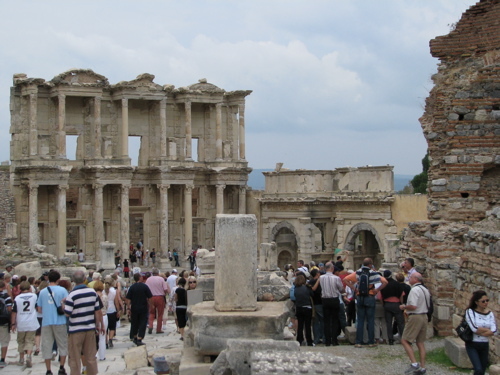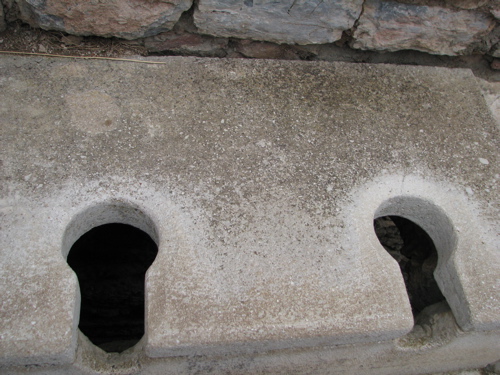With the stock market lurching up and down, and with the presidential election mere days away -- in other words, with our nation's political and economic future hanging in the balance -- it seems like it's just the right time to visit some ruins.
Ruins, are, after all, the ultimate object lesson on what can happen to a society when bad luck intersects with a long run of bad decisions. Besides which, I like ruins. I quite agree with Barbara Kirshenblatt-Gimblett, who writes in her book Destination Culture: "Ruins inspire the feelings of melancholy and wonder associated with the sublime."
So this past Wednesday, I visited Ephesus near Izmir, in Turkey. Ephesus was founded in 10th Century, BC, and went through a series of declines and comebacks. It peaked in the first and second centuries AD, when it had a population of as much a 500,000, and sunk into total abandonment by the 15th Century. Today, Ephesus is said to have the largest collection of Roman ruins east of the Mediterranean.
Although it had been a cool and rainy morning when I set out from Izmir, the sun came out just as I entered the ruins. It was blazingly hot for me, and, since it turned out to be a day that the cruise ships were ported in Izmir, for thousands of other visitors. Sweating through their t-shirts, the throngs all seemed determined to experience Ephesus through the lens of their cameras and video cameras. Of course tourists do this all the time, but the mad frenzy to record, to preserve, to carry away some evidence of "I was here" struck me as extra poignant in a place where generations lived and died, and where most of the quotidian details of their individual lives having long since disappeared.
What is left are the collective details of city life --the floor of a fancy shop decorated with a splendidly intricate mosaic, the carved slab of stone that were the communal toilets (above), a slab of marble defaced with ancient graffiti, and the restored façade of the Library of Celsus, oriented to the East to catch the morning sun for the benefit of early-rising readers. As I walked on the marble-paved streets, and threaded down a staircase, my hand brushing up against a clay wall, I thought that all of these little details make a city, a civilization, seem permanent, and were no doubt reassuring to the citizens of Ephesus, even as its end drew near thanks to the series of attacks from various invaders, earthquakes, and most catastrophically, the silting up of the harbor which destroyed the town's access to the Aegean sea.
And when I returned to Izmir, I too, drew reassurance, from the details surrounding me in my ultra-modern room at the Swissôtel Efes, the rain shower head, the flat screen TV, even the master light switch. Ruins, writes Kirshenblatt-Gimblett, "offer the pleasure of longing for the irretrievable object of one's fantasy." The fantasy, I realized, is the idea that that the decisions we make as a society will ultimately be without consequence on the details of our individual daily lives. And the longing is for what the ruins show us is simply impossible: permanence.

